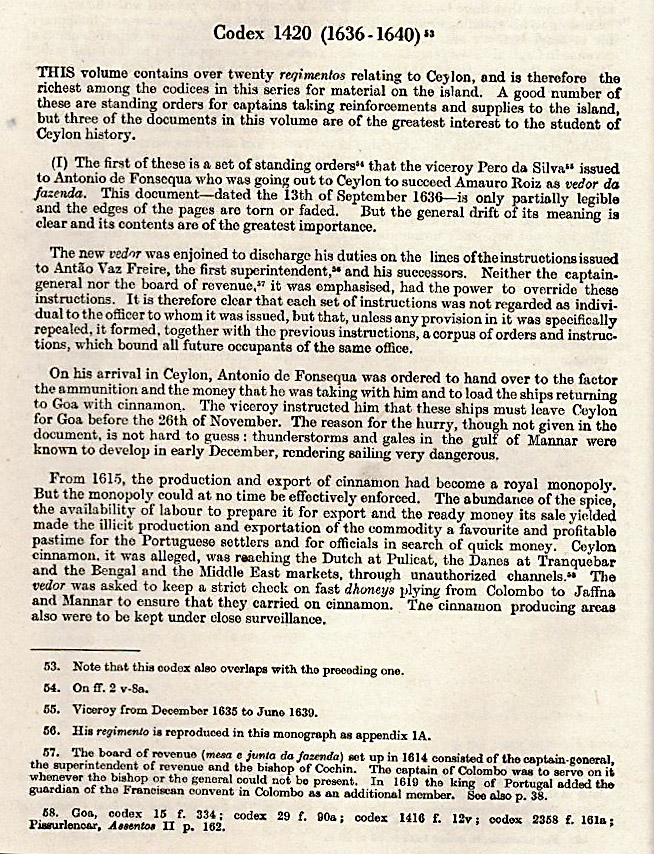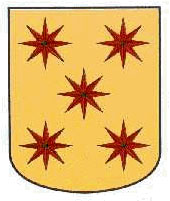
“If you don’t know your history, you don’t know anything.
You are a leaf that doesn’t know it is part of a tree.”
Michael Crichton
The surname ‘De Fonseka’ is probably what bought you to this site.
Even If not, carry on, this page will still enlighten you a lot about surnames in general.
Information about a surname is not easy to obtain, but in this page, we pursue it’s origins and lay before you the history, garnered from resources all over the world.
Your Surname
In ancient times people had only one name but as populations grew many individuals were given the same names and it became difficult to know who was being talked about. In order to reduce the confusion, individuals with the same name were differentiated from one another by various characteristics. Differentiation was based on physical characteristics (any physical characteristic could become associated with an individual), parentage (The practice of identifying individuals with their parents, especially their fathers was almost universal), occupation (associate an individual with his occupation), geographical location and other criteria. Geographical surnames, comprise the greatest number of individual surnames.
The Meaning of a Surname: The meaning of the name may be based on any of the above characteristics. Most surnames however have a geographical origin.
The Progenitor of a Surname: The word progenitor comes from two Latin words, which mean to beget before. The progenitor then, is the one whose genes carried forth the surname. This could be completely different from the founder, the meaning, or the original geographical location of the surname. For example, a Roman centurion by the name of Munio, who resided in northeastern Spain, is the progenitor of the Muñiz and Muñoz surnames. He was not the only Munio in the Roman army and certainly was not related to all of the other Munios in the Roman army. The Spanish Munio’s offspring however, persisted long enough to send their descendants all over the world. This then, is the most important characteristic of a surname, the progenitor.
The Origins of the ‘De Fonseka’ name
When the Roman Legions overran the Jewish nation, much of the Jewish population was sent into exile throughout the Roman Empire. Many were sent to the IBERIAN peninsula. The area became known by the Hebrew word SEPHARD meaning “far away”. The JEWS in SPAIN and PORTUGAL became known as SEPHARDIM or SEPHARDI, and those things associated with the SEPHARDIM including names, customs, genealogy and religious rites, became known as SEPHARDIC. Many of the names were of Hebrew derivation. A much lesser number were composed of a first name and a geographic location, many times the result of conversion.
The ‘de Fonseka’ surname (spelled da Fonseca in Portuguese) is a Jewish (Sephardic) name. The name is listed in a well researched website as a Sephardic name and was confirmed by the creator/researcher of the site Harry Stein as such.
The names listed on this site have been identified as Sephardic by civil and religious records and creditable authors. Many of the names have been changed in the course of migration from one country to another, such as Pena to Penha. This could be the reason why the spelling has changed from ‘da Fonseca’ to ‘de Fonseka’.
Other names have incorporated a prefix such as D’, Da, De, or Do, with the surname, so that D’Avila could be spelled DAVILA. Other names normally found with a prefix, may be listed with or without the prefix. For example, d’ ANDRADE, da ANDRADE, de ANDRADE, may be listed as ANDRADE or ANDRADE ‘D.
The different names referred in the website and the codes of the reference material are listed below.
da Fonseka (1),(7),(8),(17),(18),(26)
de Fonseca (1),(21),(25),(28),(28c)
Fonseka de (13),(21),(23),(25),(28c)
Fonseka da (8),(17),(18),(26)
The Sephardic names listed on this site are taken from the reference material listed below. Beside each listing is a number or series of numbers and letters enclosed in parenthesis such as (2) (6A) etc. These numbers correspond to the references listed below where the names were found. The authors of these works have identified the names as being held by Sephardim.
| (1) | From the civil records of Amsterdam, The Netherlands. |
| (7) | From the book, “A History of the Marranos”, by Cecil Roth. |
| (8) | From the book, “Jews in Colonial Brazil”, by Arnold Wizhitzer. |
| (13) | From the book, “The Jews of New Spain”, by Seymour B. Liebman. |
| (17) | From the book, “Hebrews of the Portuguese Nation”, by Miriam Bodian |
| (18) | From the book, “The Sephardim of England”, by Albert M. Hyamson. |
| (21) | From the book, “Crisis and Creativity in the Sephardic World: 1391-1648”, by Gampel. This book lists Sephardic movers and shakers during the period. |
| (23) | From the book, “Secrecy and Deceit: The Religion of theCrypto-Jews”, by David Gitlitz. The names of the Sephardim (and their residences) mentioned were, sometimes, involved with the inquisition. There were other names which are not listed here because the author did not identify those names as Sephardic. |
| (25) | From the book, “The Jews of Jamaica”, by Richard D. Barnett and Philip Wright. This book contains tombstone inscriptions and dates of death from 1663-1880. Only names that appeared Sephardic are included here. |
| (26) | From the book, “Die Sefarden in Hamburg” (The Sephardim in Hamburg [Germany]) by Michael Studemund-Halevy. German names are due to inter marriage. |
| (28) | From the book, “Judios Conversos” (Jewish Converts) by Mario Javier Saban. Los antepasados Judios de las familias Argentinas. This work contains many Sephardic names and family trees within its 3 volumes. Many of the individuals listed appeared before the inquistion and were secret Jews. Some later converted and intermarried. The description “Jew “and “Portuguese” appear to be used interchangeably. Only those names that were identified as Sephardic Jews or descendant from Sephardic Jews or in some cases, new Christians that married into Sephardic families are listed here. It is possible that some Sephardic names not well identified are not listed. If you have Sephardic/Portuguese family roots in early Argentina, research these volumes. Many of the names listed here represent the famous names of Jewish/Sephardic Argentina. Wonderful family trees, well detailed, are provided in the three volumes. |
| (28c) | “Portuguese” of Cordoba. Apellidos de los Portugueses de Cordoba. The list provides the entry point and the year of arrival. |
Details of the Sephardic origins of the de Fonseka name has been included with the kind permission of Harry Stein, of www.sephardim.com. For more details on the Sephardic origins and other Sephardic surnames, please visit this well researched and documented web site.
The Origins of the ‘De Fonseka’ name in Ceylon
Historical Literature such as the ‘Mukkara Hatana ‘ indicate that the Kaurava Additiya Arasanilayitta clans arrived in the island at the invitation of the King of Kotte to help him fight a South Indian group of invaders known as Mukkurvas encamped around Puttalam. The clan helped the king to evict the invaders and went on to capture Jaffna. The great full king granted them land and the clan settled in the seaboard north of Negambo. (read more about it in ‘The early History – Beyond 1658‘)
The arrival of the Portuguese in the island and the subsequent events led to the spread of Christianity in the island. Members of the clan (now known as the Varnakula Additiya Arasanilayitta) embraced the religion and took on different names of Portuguese origins. The name most probably would have been the name of the ‘sponsor’ who took part in the baptism ceremony, or would have been a name assigned by the Portuguese Authorities. An example of such an event is given in the book 20th Century Impressions, in reference to the De Silva Wijeratne families( Page 667 – 669).
‘ The son of Aditya was baptized in the Catholic Church by the Portuguese Military chaplain (AD 1538 – 1545), and was given the Surname of De Silva by his sponsor, Captain de Silva, of the Portuguese army, and being called Pedro after the priest who baptized him. It may be explained that the giving of Portuguese surnames by the military officers was a general custom in Ceylon during the Portuguese occupation.’

Who lent the name ‘de Fonseka’. Was he a military officer, a priest or some other?
While it cannot be said with certainty who the very first de Fonseka on the soil of Ceylon (Sri Lanka) is, a clue as to who it could have been, appears in the book ‘ A Study of Portuguese Regimentos on Sri Lanka at the Goa Archives’, by Tikiri Abeysinghe (published by the Department of National Archives, 1974).
The book contains instructions (regimentos – company rules) sent to the administrators in Ceylon, and relates to the period 1636 – 1640. The standing orders given by Viceroy, Pero da Silva, mentions the very first de Fonseka name that has come to light in Ceylon. He was Antonio de Fonsequa who was appointed as the “Vedor de Fazenda in Ceylon. This was the post of Superintendent of the Revenue, a key post in the Portuguese Administration. The order was issued to Antonio de Fonsequa dated 13th Sept 1636 by the Viceroy in Goa , Pero da Silva.
(1) the first of these is a set of standing orders that the viceroy Pero da Silva issued to Antonio de Fonsequa who was going out to succeed Amauro Roiz as vedor da fazenda.
Other well known names of Portuguese origins in Ceylon include, Andrade, Mello, Silva, Pereira, Costa, Pinto, Miranda, Gomez, Britto, Pieris, Taxeira (Tissera) and Fernado (Fernando). Antonio Mirreles de Andrade was appointed in 1640 as the Purchasing officer and Superintendent of aid to the island of Ceylon. His job was to purchase rice in South India and transport it to Ceylon.
A Place called ‘Fonseca’
‘Fonseca’ is also the name of a place in Portugal. The name belongs to a village in ‘S. Joao de Fontoura’, situated near the town of ‘Resende’, in the area of the city of ‘Viseu’. The picture on the left shows the main square and the cathedral at Viseu.
This piece of information was supplied by Ligia Portovedo in response to a listing in the Portugal Genealogy Forum. My thanks to Ligia for the valuable piece of information.
The name Fonseca, and its meaning
The name Fonseca probably had it’s origins in Italy, then spread over Spain and Portugal (the Iberian Peninsular). Despite it’s noble origins in Portugal and Spain, it is a common name today. It has different coat of arms in these two countries. It’s members in Spain belonged to one of the prominent and ruling families in Salamanca. In Portugal several reached notoriety, and one of them was the ruling prince of Malta.
(The above information was supplied by Fernando Fonseka Raimundo of Portugal in response to a listing in the Fonseca Genealogy Forum. My thanks to Raimundo for the valuable piece of information.)
Da (Portuguese) De (Spain) means ‘from’, which leads one to believe that the name had to be associated with a place. In my research I found the following:
Fonseca: Spanish and Portuguese: Topographic name for someone who lived by a spring that dries up. Font (well) + Sicca (fem.- dry). “Fonte” and “Seca” – in a direct translation in English means “dry spring” or “dry fountain”.
The surname is both Spanish and Portuguese, it seems to comes from the Linhagem near the Douro river. ( The Ribadouro family was one of the five most important noble families of pre independent Portugal. Riba in old Portuguese means ‘by the side of a river’, and Douro is the name of the river.) In the case of Spain, the surname originates in the province of Salamanca.
The name Fonseca, its history
One of the earliest records, state that this family originated from D. Moninnho Viegas, who had a son, called Dom Garcia Moniz who was killed in the battle against the Moors. His grandson Dom Garcia Rodrigues changed his name for that of the name of his property. He held the title of “knight of Fonseca”, land which he took from the Moors with the help of his brother Dom Paio Garcia.
The Spanish version states that brothers Pierres and Payán came to Spain from Hungary and where so valiant fighting the Moors that the king Don Alfonso VI in gratitude gave them the land of Fuentesaca o Fonseca and the territory of Coutiño in Galicia. When they took possession of the land Pierres and his descendants took the name of Fonseca and the descendants of Payán took the name of Coutiño.
The following information was taken from a Portuguese Genealogy Website and was translated with the assistance of Alicia Fonseca. The original site in Portuguese is found at http://genealogia.sapo.pt/familias/fam_show.php?id=383
History: Name with typical topographic roots, known to honor da Fonseca in the St. Martin of Moors parish. Was adopted by one of the two descendants lines from the Steep-Douro, a fact that has been proved in heraldic terms. The de Fonseca maintained a privileged nobility position until around the XV (15th) century. At this point a first-born had a conflict with the Portuguese crown and the respective heads of family went to Castilla (Castile) in exile. (Note: By the late fifteenth century, Portugal, which had already established its dominance as a maritime power in the Atlantic, was exploring new waters. In 1505 Don Lourenço de Almeida, and a fleet arrived off the coast of Galle. It could be possible that a member this family from castile arrived with the subsequent Portuguese settlers.)
Coat of Arms of the Fonseca families
Gold with five red stars of eight points.
Seal: a red passer-by bull armed in gold and carrying a red seven points star on his back.
(The above information as well as the translation was supplied by Alicia Fonseca in response to a listing in the Fonseca Genealogy Forum. My thanks to Alicia for the valuable information.)
Da Fonseca in South India
In the book “The Jews of India” by Walter J Fischel much is told about Alvares/Alvarez da Fonseca “the Hebrew” in S. India. He is always referred to as a Jew and not a Christian convert. Many converted Jews from Spain and Portugal returned to Judaism after arriving in Amsterdam, London or India. He is mentioned in 1683 in Fort St. George, Madras as an “interloper” merchant, i.e, one who works outside the East India Company. He was soon legally received, had commerce with inner India and Bengal, had permission to use the Company’s ships and ended as one of the 12 “elders” of the municipal council of St George. He spent his last years in London and died there after 1707.
Amram.
(From a message put on the Sephardim Jewish message board by Anne Winter Williams. My thanks to Amram and Anne for the valuable input)
Names of Nobility
Some names of Portuguese origins found in the Family Tree are used to indicate nobility. The use of the name ‘Don’ as used by Don Michael De Fonseka, Don Louis de Anderado and Don Manuel D’Anderado indicate a person of Nobility. The feminine form ‘Dona’ was used to indicate a female of noble birth.
The use of the titular word ‘Don’ existed in Portugal, Spain and Italy. It is the shortened form of the Latin word ‘Dominus’, meaning Lord. The word ‘Braz’ as used in Braz de Anderado is also a noble name of rank (Nobility Ranking Name).
To ‘de’ or not to ‘de’
Ever wondered why there is a ‘de’ in front of your name?
The following paragraph in the book ‘The Rise of the Colonial Bourgeoisie in Sri Lanka’ by Kumari Jayawardene strikes a chord on the ‘de’ part (or ‘De’) of the de Fonseka name.
‘Jeronis Soysa’s son Charles, born in 1836 was sent to the Colombo Academy where he received an education in English and added the fashionable prefix ’de’ to his surname.’
The name ‘de’ is considered the aristocratic part of the name, the equivalent of which is found in the French/Italian ‘de’ and the German ‘von’ prefixes. In Spain and Portugal, this part of the name is also written as ‘da’, and the complete surname being written as ‘da Fonseca’. In its use, the ‘de’ gives the meaning ‘from’ or ‘originating from’.
It seems that during the times of the Colonial administrators, different families that rose in stature, due to new found economic prosperity and or on being presented with titles such as Muhandiram and Mudaliyar, took on the ‘de’ part of the name to signify their new found status in society. It is also evident that most of these changes took place during the British Administration. So it is still possible to find, for example Gampolage Fonseka families as well as Gampolage de Fonseka families.
In the example quoted above, it is possible that the Portuguese name of Souza was corrupted to the name Soysa (or Soyza), and then with the meteoric rise of the family during the 1800’s took on the name of ‘de Soysa’.
In one of the family trees I found in my research, this name change has happened between 1870 and 1893. This family is one from the Hewafonsekage Fonseka families. When you consider the de Soysa example given above, it is possible that Charles Soysa born in 1836 may have graduated from the Colombo Academy (at around 19 Years) in 1855, and took upon the ‘de Soysa’ name at around that time.
Family Tree of Hewafonsekage Abraham Fonseka.
Related Stories
My thanks to Jorge Arez Da Silva, for some valuable information in compiling this page.

